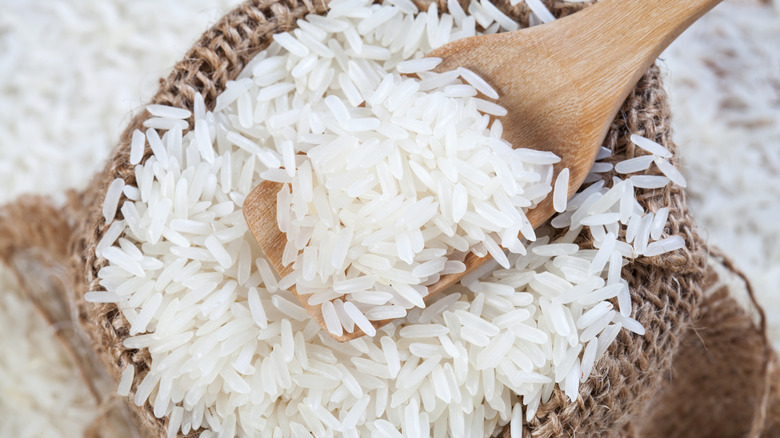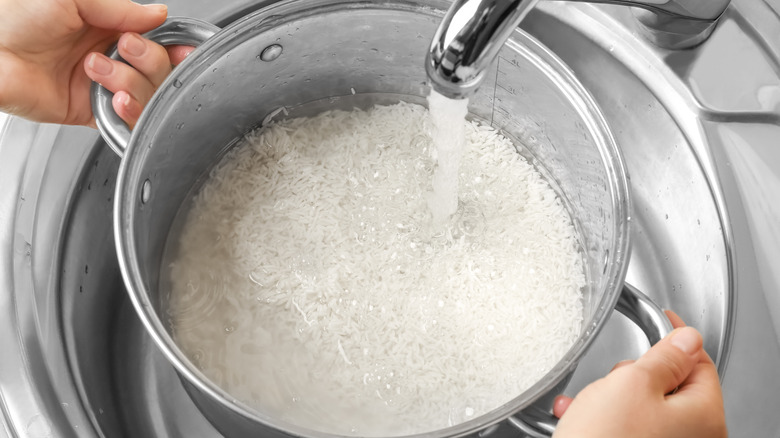The Unhealthy Mistake You Might Be Making When Cooking Rice
Rice is a dinner table staple for many people. However, inorganic arsenic, a "toxic trace element" that can actually enter the food chain through groundwater, is found in rice, according to Healthline. If you don't rinse your rice before using it, you're making a crucial mistake. This is because rinsing rice removes some of that excess arsenic. Doing so before adding your rice to the rice cooker can remove anywhere from 10 to 28% of arsenic, per Healthline.
Washing rice is especially important if you're using brown rice, as it contains more arsenic than white rice. While rinsing off rice is an important part of preparation, you'll also want to ensure the rice has plenty of water in which to cook. Washing your rice beforehand and cooking it in clean water can reduce the amount of arsenic by 57% (via Healthline). If using white or brown rice still leaves you feeling uncomfortable, you can switch to other types of rice that are lower in arsenic, like jasmine or basmati rice.
What arsenic can do to your body
"Unusually large doses of inorganic arsenic can cause symptoms ranging from nausea, vomiting, and diarrhea to dehydration and shock," according to the Centers for Disease Control and Prevention (CDC). Organic arsenic, on the other hand, is considered non-toxic. It is typically found in seafood, but the amount contained is much lower than what's found in inorganic arsenic.
Continued exposure to inorganic arsenic can be especially dangerous, causing serious conditions like "skin disorders, an increased risk for diabetes, high blood pressure, and several types of cancer," according to the CDC. While you're more likely to encounter inorganic arsenic through drinking water, it can still be found in rice and even some fruit juice. Unfortunately, you can't tell how much arsenic is in your rice by simply looking at it. Instead, simply make rinsing your rice a habit before cooking it, and always cook it in clean water.


